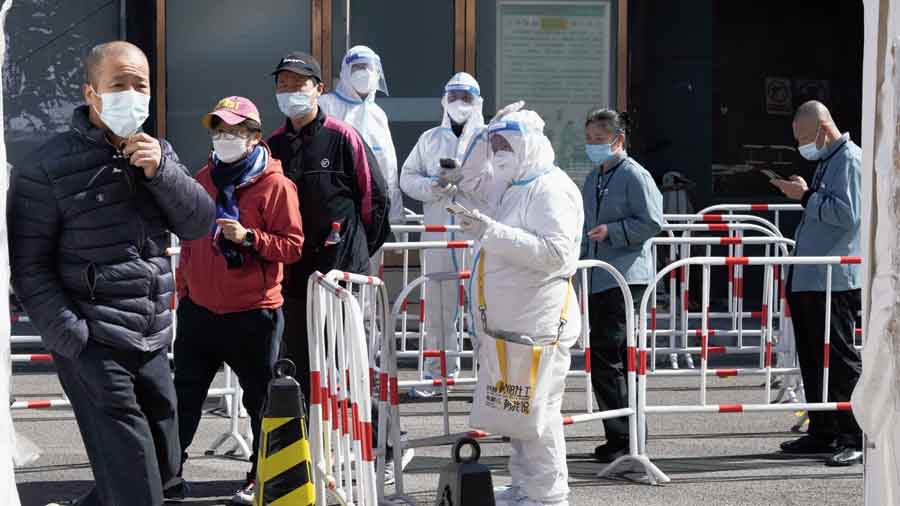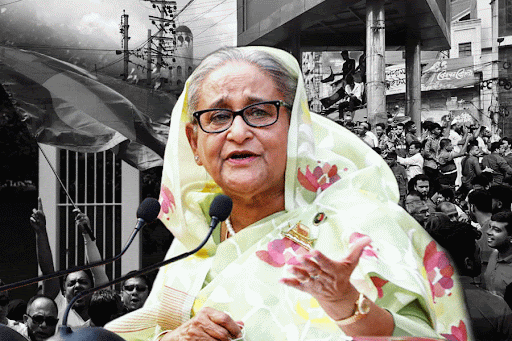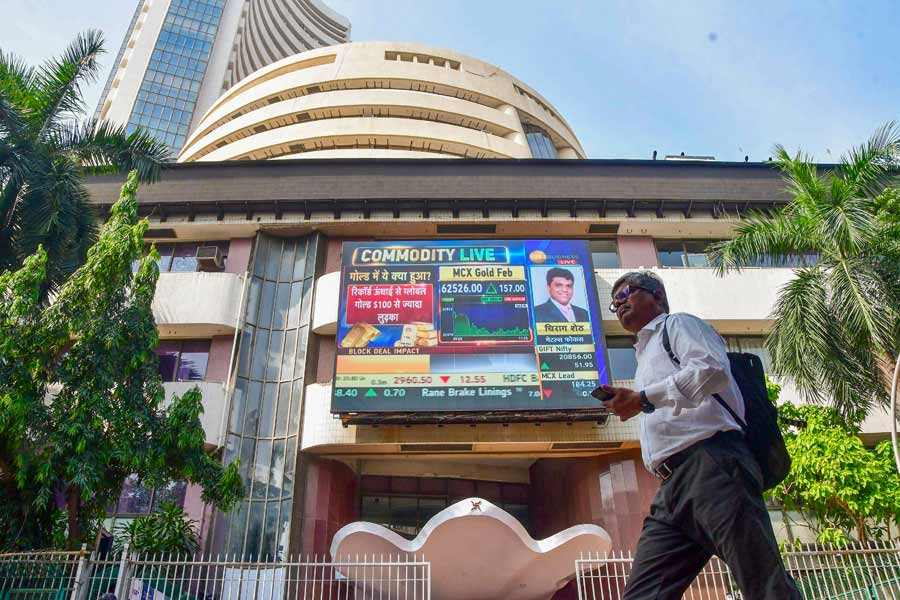Chinese authorities on Tuesday tightened anti-virus controls at ports, raising the risk of trade disruptions after some auto and electronics factories shut down as the government fights coronavirus outbreaks.
Stock prices in China and Hong Kong sank for a second day following the shutdown on Monday of Shenzhen, a tech and finance hub adjacent to Hong Kong in the south, and Changchun, an auto centre in the northeast. Bus service to Shanghai, China’s business capital and biggest city, was suspended.
China’s case numbers are low compared with other major countries or Hong Kong. But authorities are enforcing a “zero tolerance” strategy that aims to keep the virus out of the country.
It has temporarily shut down major cities to find every infected person.
The restrictions come at a time when the global economy is under pressure from Russia’s war on Ukraine, surging oil prices and weak consumer demand.
“We can think of no risk to the global economy, excluding nuclear warfare, that is greater than the risk of a Covid outbreak in China that shutters industrial production,” said Carl B. Weinberg of High-Frequency Economics in a report. “Uncountable manufacturing supply chains pass through China.”
Economists say for now, smartphone makers and other industries can use factories and suppliers in other parts of China. But a bigger threat looms if business is disrupted at ports in Shenzhen, Shanghai or nearby Ningbo.
They link Chinese factories that assemble most of the world’s smartphones and computers, as well as medical devices, appliances and other goods, with foreign components suppliers and customers.
A one-month slowdown at Shenzhen’s Yantian Port last year caused a backlog of thousands of shipping containers and sent shockwaves through global supply chains. “The risk here is whether Covid will be found at Yantian Port,” said Iris Pang, chief China economist for ING. “If the port has to be suspended, it will affect a lot of electronic imports and exports.”
There was no sign of major disruption, but port operators announced curbs on face-to-face contact with shippers and sailors.
The agency that manages the Shanghai port closed windows where customers submit documents and said that function would go online. It gave no indication cargo-handling or other operations were affected.
The port of Lianyungang, north of Shanghai, announced foreign sailors were barred from leaving ships or using the city to change crews.
Shenzhen suspended cross-border freight service at the Liantang crossing into Hong Kong. It said the Man Kam To crossing would be limited to handling fresh and live food to make sure Hong Kong gets adequate supplies.
“The lockdown of Shenzhen creates significant risks of supply chain disruptions,” said Rajiv Biswas, chief Asia economist for IHS Markit, in an email. The risk of global disruption “would escalate if authorities in Shanghai also decide to implement a lockdown.” The number of new cases reported Tuesday on the Chinese mainland more than doubled to 3,507. Almost three-quarters were in Jilin province, where Changchun is located, with 2,601 cases.
Hong Kong, which reports separately, had 26,908 cases on Monday.
The Yantian Port tried to reassure customers operations were normal.
A statement on its social media account promised to “make every effort to ensure the smoothness and stability of this lifeline for port supply”.
China, where the pandemic started in late 2019 in the central city of Wuhan, became the first major economy to rebound after Beijing closed factories, shops and offices to contain the disease.
This year, the ruling Communist Party’s growth target is 5.5 per cent.
If achieved, that would be well below last year’s 8.1 per cent expansion.











